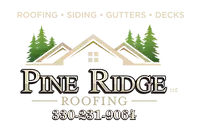Navarre Roof Damage by Weather Conditions and Insurance Claims - A Comprehensive Guide
Your home is your sanctuary, and your roof plays a crucial role in keeping it safe and secure. But what happens when roof damage by weather conditions strikes? Understanding the types of roof damage caused by the elements, navigating the insurance claim process, and knowing how to maintain your roof can make all the difference in protecting your investment.
This comprehensive guide will walk you through everything you need to know to safeguard your home and navigate “roof damage by weather conditions and insurance claims” with confidence.
In Navarre, Roof damage resulting from severe weather conditions like storms, high winds, tornadoes, and hail is a frequent occurrence. At Pine Ridge Roofing we are prepared to offer our support to address these issues.
Key Takeaways
Table of Contents
Navarre Roof Damage - Types of Weather-Related Roof Damage
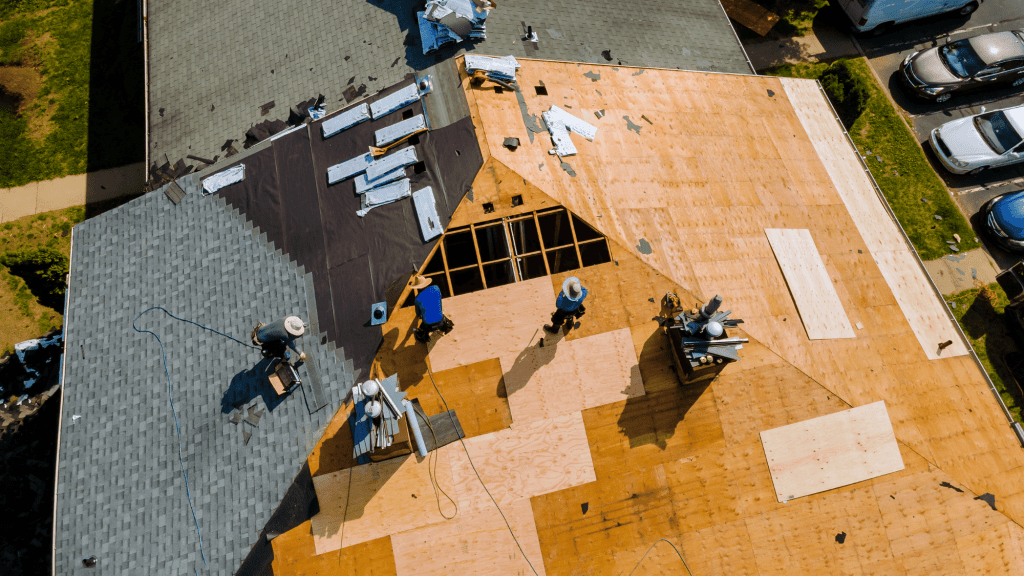
In Navarre, roof damage by weather conditions is really common. Weather can be unpredictable, and it can wreak havoc on your roof. Wind, hail, and rain or snow are the most common culprits of weather-related roof damage, often leading to insurance claims and costly repairs or replacements.
Protecting your home requires recognizing the signs of storm damage and comprehending how these forces impact your roofing materials.
Is roof damage covered by insurance? For home insurance to provide coverage for your roof damage expenses, it is essential to establish that the damage was a direct result of an extreme weather event.
Wind Damage
In Navarre, roof damage caused by high winds can silently jeopardize the condition of your roof. This damage may manifest as missing shingles, lifted flashing, or cracked tiles, and in severe cases, it might result in the complete displacement of the roof. Despite appearing minor initially, these damages can escalate over time, leading to leaks and structural issues that necessitate initiating the roof insurance claim process.
Repairing an older roof introduces challenges, particularly with less flexible and prone-to-cracking shingles. It is imperative to involve a qualified roofing specialist for a meticulous roof inspection and to promptly address any damage.
Gaining insight into the wind insurance coverage specifics in your homeowner’s insurance policy is pivotal for preparedness, especially during adverse weather conditions such as storms.
Wind damage can stem from various weather events, including severe storms or hurricanes. Consistently monitoring your roof’s condition post such events is essential, and taking swift action upon observing visible signs of wind damage is critical. If, for instance, a sizable tree branch is discovered on your roof, it is advisable to have it professionally removed to prevent further damage and potential roof damage claims.
Hail Damage
When a hailstorm sweeps through, it can leave a trail of destruction on your roof, causing dents, punctures, and granule loss on shingles. Although this type of damage may not always be evident to the untrained eye, its impact on your roof’s lifespan and performance is considerable. Hail can bruise or crack the shingle mat, creating openings for water to infiltrate your home gradually, potentially resulting in the necessity of a roof claim.
Roof inspection for hail damage can be challenging, especially after a storm. Insurance adjusters and roofing professionals often consider metal components surrounding the roof, such as:
- Roof vents
- Pipe boots
- Gutters
- Roof flashing
It is crucial to exercise caution and avoid inspecting the roof immediately after a storm, especially if it has a steep slope. In the event of substantial hail damage, taking prompt action, such as attaching tarps to the roof, is imperative to prevent further damage from rainwater.
Rain and Snow Damage
Rain and snow may seem harmless, but they can wreak havoc on your roof if not properly managed. Here are some potential issues caused by rain and snow:
- Leaks and water damage
- Structural issues
- Roof collapse due to the weight of accumulated snow
- Ice dams, which can damage your roof and gutters
It’s important to take steps to protect your roof from these potential problems.
It’s imperative to take preventive actions such as routine inspections, ensuring ample ventilation, and effective waterproofing to shield your property from rain and snow damage. Proactively managing your roof’s upkeep and having a good understanding of homeowner’s insurance options, including Actual Cash Value (ACV) and Replacement Cost Value (RCV) policies, can help minimize the risk of costly repairs or replacements stemming from adverse weather conditions.
Navarre Roof Damage - Insurance Coverage for Weather-Related Issues
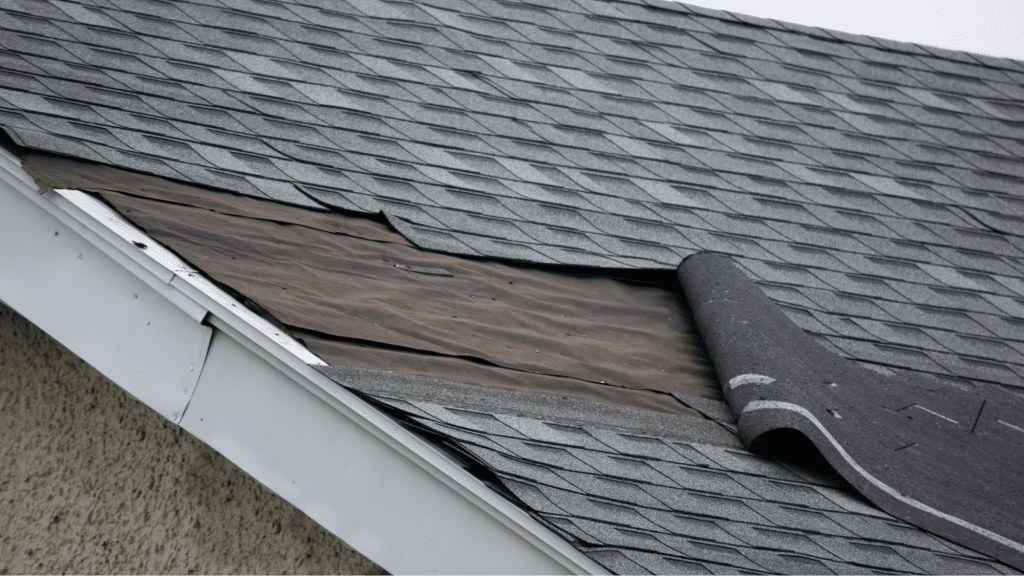
Securing your financial well-being in the face of unexpected roof damage in Navarre, OH, hinges on the pivotal role played by the insurance company. Yet, navigating the intricate landscape of insurance coverage can be a daunting task. A thorough understanding of policy distinctions, like Actual Cash Value (ACV) and Replacement Cost Value (RCV), and a keen awareness of prevalent exclusions can exert a substantial influence on the handling and eventual resolution of your claim.
Policy Types: ACV vs RCV
When it comes to roof coverage, an Actual Cash Value (ACV) policy is designed to facilitate the replacement process by reimbursing you for the depreciated value of your roof, minus the deductible. Essentially, this means you’ll receive compensation based on the current value of your roof at the time of damage. However, it’s important to note that this might not cover the entire cost of repairs or replacement.
On the flip side, a Replacement Cost Value (RCV) policy offers more extensive coverage. It covers the entire cost of roof replacement, providing funds for a new roof based on current market prices and materials. Under an RCV policy, you’ll first receive a check for the actual cost value of your roof. After completing the roof replacement, a second check for the remaining amount will be issued, contingent upon meeting all specified requirements.
The choice of a suitable policy for your needs can greatly impact the payout you receive in the event of a roof damage claim, making it an important decision. It is essential to:
- Review your insurance policy
- Understand the differences between ACV and RCV
- Consult with your home insurance company to ensure you have the appropriate coverage for your specific situation.
Common Exclusions
Safeguarding your home from weather-related roof damage in Navarre, Ohio, with homeowners insurance is a wise decision, but it’s equally important to be aware of common exclusions that might impact your claim, like:
- improper installation, which refers to deviating from the manufacturer’s instructions or local building codes during roof installation. Such deviations can lead to accelerated wear and tear and potentially invalidate your roof’s warranty.
- Neglecting routine maintenance is another exclusion, involving tasks like cleaning gutters and removing debris. Damages resulting from insufficient maintenance may not be covered by your insurance policy.
- Additionally, some policies may exclude coverage for specific weather events, such as hurricanes or earthquakes.
A thorough review of your insurance policy is essential to understand these exclusions and ensure you have the appropriate coverage for your roof. Inadequate maintenance occurs when a roof is not regularly inspected and maintained according to the manufacturer’s instructions or local building codes, possibly resulting in premature deterioration and warranty invalidation.
Understanding these exclusions and taking steps to ensure proper roof installation, regular maintenance, and protection from excluded weather events can help you avoid potential claim denials and ensure you receive the coverage you deserve.
Navarre Roof Damage - Filing an Insurance Claim
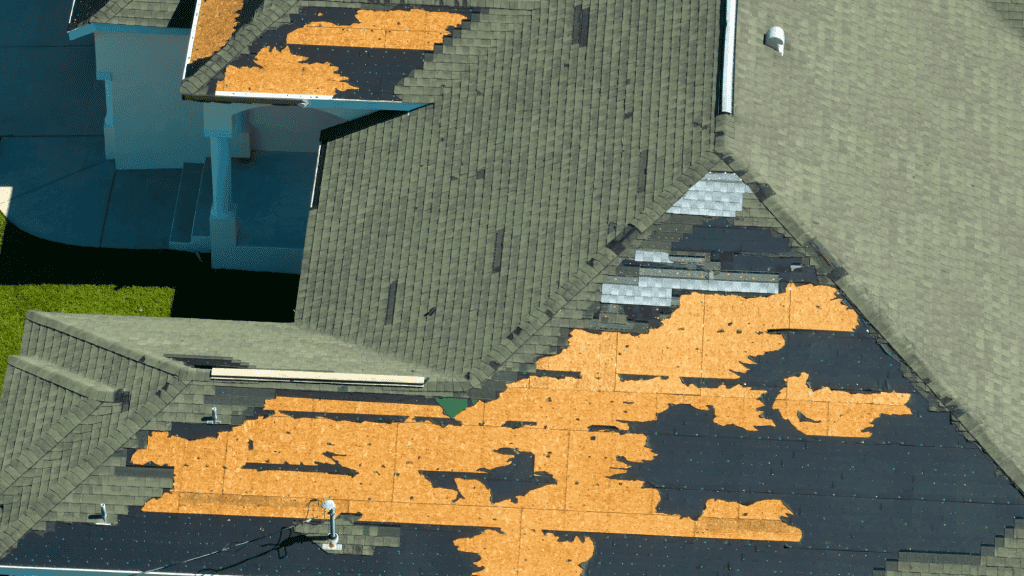
Navigating the process of filing an insurance claim for roof damage in Navarre, Ohio requires a well-thought-out approach. From meticulous documentation of the damage to effective collaboration with insurance adjusters and making wise decisions when choosing a roofing contractor, each step is crucial for a successful claims process.
This guide provides a comprehensive overview, guiding you through the necessary steps and offering valuable tips to ensure a smooth and successful insurance claim experience for roof damage.
Documenting the Damage
A systematic documentation approach is essential when filing an insurance claim for roofing damage. Follow these steps:
- Capture comprehensive photos of the damaged areas, highlighting any missing shingles, raised flashing, or damaged tiles.
- Create a detailed list of the damage, accompanied by thorough notes, including dates, times, and any pertinent weather events contributing to the damage.
- If preventive measures have been taken, such as securing tarps to the roofing, document these measures through photographs.
After documenting the damage, obtain an estimate from a qualified roofing contractor to assess the repair or replacement costs. This estimate not only provides clarity on the extent of the damage but also serves as crucial documentation when filing your claim with the insurance company. A comprehensive and accurate record of the roofing damage significantly enhances the chances of a successful claim.
Working with Adjusters
In Navarre, roof damage insurance adjusters are pivotal to the claims process, assessing the damage and determining the claim payout value. A successful claim outcome hinges on effective collaboration with adjusters, emphasizing the need for accurate information, meticulous record-keeping of all interactions and documents, and maintaining transparency throughout.
In the event of a denied claim, exploring resolution options becomes crucial:
- One approach is requesting a different adjuster from your insurance company to provide a second opinion.
- Another option is consulting a structural engineer for a thorough inspection and evidence of the damage.
- As a last resort, pursuing legal avenues is an available course of action.
By comprehending the adjusters’ role and preparing for effective collaboration, you enhance the chances of a successful claim. This ensures you receive the coverage needed to repair or replace your roof damaged in Navarre.
Choosing a Reputable Roofing Contractor
The choice of a reputable roofing contractor plays a vital role in ensuring both quality work and a smooth insurance claims process. When investigating roofing contractors for insurance claims, it’s essential to consider factors such as their experience with claims, turnaround times, and their ability to collaborate with adjusters. A qualified roofing contractor excels in accurately documenting damage according to insurance companies specifications and providing expert assessments.
Opting for a local and reliable roofing contractor, such as Pine Ridge Roofing, provides peace of mind regarding the handling of your roof repair or replacement. Their team of certified roofers and insurance specialists is committed to assisting with storm repair, restoration, and insurance claims in Navarre, OH, and the neighboring areas. Choosing an experienced roofing contractor is a surefire way to guarantee the safety and integrity of your home.
Navarre Roof Damage - Preventative Measures and Maintenance
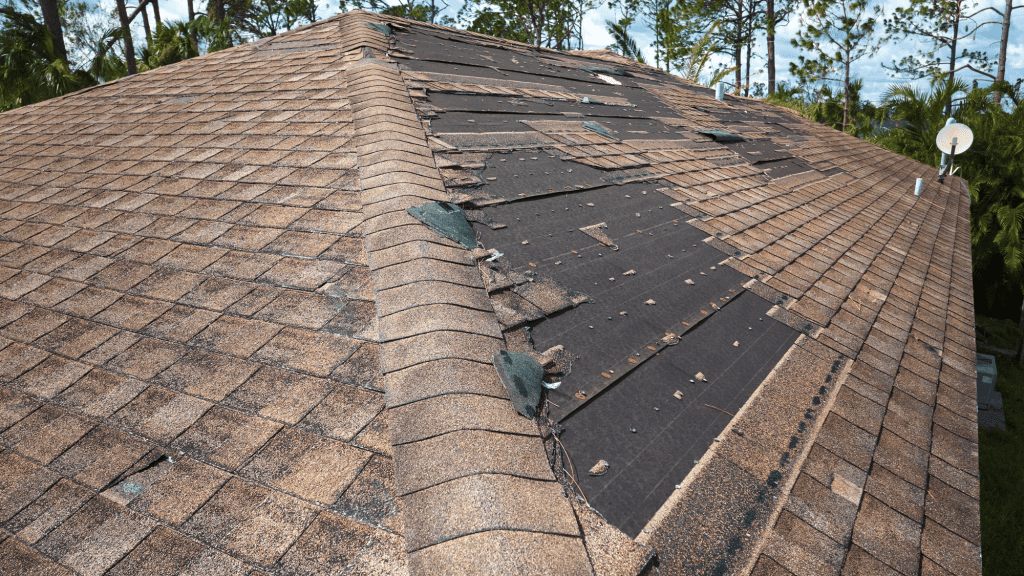
While insurance can provide financial protection for weather-related roof damage, taking preventative measures and maintaining your roof can help you avoid costly repairs or replacements in the first place. This section highlights the importance of routine inspections, appropriate ventilation, and waterproofing for maintaining your roof in prime condition and minimizing the risk of weather-related damage.
Routine Inspections
Regular roof inspections serve as an effective method to spot and tackle potential issues before they escalate into significant problems. Inspections should evaluate the roof for signs of:
- Deterioration
- Missing or damaged shingles
- Debris in the gutters
- Roof ponding
Regular roof inspections are highly recommended, especially in areas prone to extreme weather conditions. Conducting these inspections at least twice a year is essential for proactive maintenance.
By identifying and addressing minor issues early on, you can avoid costly repairs or the need for a complete roof replacement. For a thorough and expert assessment, consider hiring Pine Ridge Roofing, a reputable contractor known for maintaining roof integrity. Schedule your free roof inspection today and ensure the longevity of your roof.
Proper Ventilation and Waterproofing
Shielding your roof from the adverse effects of moisture buildup, ice dams, and other weather-related damage requires a focus on proper ventilation and waterproofing. This includes:
- Maintaining good indoor air quality
- Implementing effective home ventilation strategies
- Utilizing exhaust fans and air purifiers
- Installing a reliable ventilation system
- Ensuring the correct attachment of roof ventilation products.
Neglecting these aspects may result in problems like moisture accumulation and ice dams, potentially leading to costly repairs and replacements. Prioritizing adequate roof ventilation and waterproofing is key to reducing the risk of damage and prolonging the performance and lifespan of your roofing materials.
Pine Ridge Roofing: Your Partner in Roof Repair and Insurance Claims
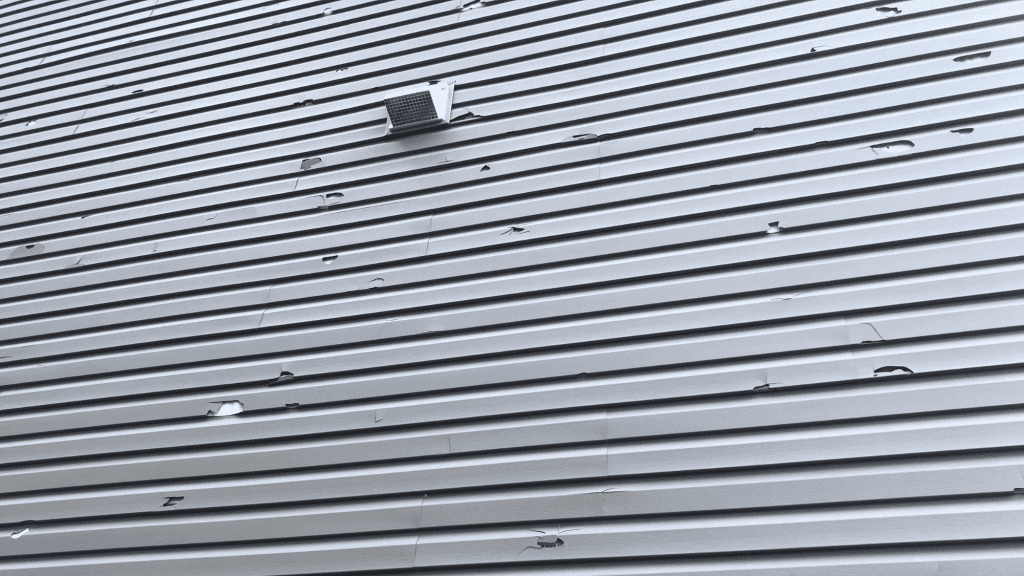
Pine Ridge Roofing, serving Navarre, Ohio, and surrounding areas, specializes in:
- Storm damage repairs
- Insurance claims
- Emergency inspection
- Tarping services
- Assistance with insurance claims for weather-related roof damage
- Roof replacements
- Siding repair and replacement
- Gutter repair and replacement
- Leaf Guard Installation
- Deck building
With a combined experience exceeding 25 years, our team of certified roofers and insurance specialists is unwavering in its commitment to providing excellent roof repairs. We are dedicated to safeguarding and restoring your home following any weather-related damage event.
Emergency Inspection and Tarping Services
If you suspect roof damage, arranging a complimentary emergency inspection with Pine Ridge Roofing is imperative. This inspection helps gauge the extent of the damage, aiding in informed decisions on necessary repairs or replacements. Our skilled professionals conduct a comprehensive evaluation of your roof, identifying issues such as missing shingles, raised flashing, or cracked tiles that may require immediate attention.
In addition to emergency inspections, Pine Ridge Roofing extends the following services:
- Our tarping services offer temporary protection, preventing further damage to your roof.
- Respond promptly by securing your roof with tarps to minimize the risk of additional damage.
- We ensure your home stays safe and secure throughout the insurance claim process.
Insurance Claim Assistance
Navigating the insurance claim process can be overwhelming, but Pine Ridge Roofing is here to help. They offer the following services:
- Assisting with insurance claims
- Representing homeowners
- Negotiating with insurance companies
- Providing quality roof replacement services
Pine Ridge Roofing’s proficiency in insurance claims ensures that you achieve the optimal outcome, letting you focus on the safety and well-being of your family. Their insurance claim support involves:
- scheduling emergency inspections
- tarping damaged areas
- representing homeowners during insurance adjuster meetings
- negotiating with insurance companies
- utilizing high-quality products like Owens Corning shingles and synthetic felt for roof replacements.
With Pine Ridge Roofing, be confident that your roof repair or replacement will be managed with professionalism and efficiency, providing you peace of mind and the security of a well-protected home.
Summary
Dealing with the aftermath of weather-related roof damage in Navarre, Ohio is a significant task for homeowners. Understanding the nature of the damage, successfully navigating insurance claims, and adopting preventative roof maintenance practices are pivotal. This guide imparts essential knowledge. With the expertise of Pine Ridge Roofing, a trusted contractor, you can confidently address weather-related roof damage, ensuring the protection of your home and loved ones.
Frequently Asked Questions
Does Home Insurance Cover Roof Storm Damage?
Home insurance policies vary in their coverage of roof storm damage, contingent on the terms outlined in your specific plan. Most insurance plans typically include protection for damages inflicted by hail, strong winds, destruction from falling objects, and internal harm caused by roof storm damage. To illustrate, if a storm results in your roof’s destruction and subsequent rainwater damage to the ceiling, your insurance policy is likely to cover the necessary repairs for both the roof and ceiling.
Are blown-off shingles covered by insurance?
Understanding the essential nature of roofs, insurance firms typically account for potential damage and cover the costs associated with replacing a roof when unforeseeable events lead to the loss of shingles.
What is considered wind damage to shingles?
Wind-induced shingle damage is commonly identified by tearing, creasing, or detachment from the roof surface. This phenomenon is particularly prevalent in three-tab shingles, primarily caused by frequent lifting or flapping. It’s worth noting that unsealed shingles generally avoid such issues unless there is noticeable physical mat damage.
My roof doesn’t leak. Does this mean my roof is okay?
Just because your roof doesn’t exhibit leaks, it doesn’t necessarily indicate that your roof is in perfect condition. In numerous instances, roof damage isn’t immediately visible, and leaks might not manifest during the next rainfall. Concealed damage can persist unnoticed for an extended period. Skilled roofing professionals, as we have at Pine Ridge Roofing, possess tools and techniques that enable them to identify moisture beneath roofing materials and identify areas of damage that might otherwise go unnoticed. Schedule your free inspection now!
What is the most common roof damage?
Roof damage in Navarre, OH, particularly leaking roofs, is a prevalent issue. This is commonly a result of broken shingles, inadequate flashing around chimneys or gutters, and near vents or pipes.
